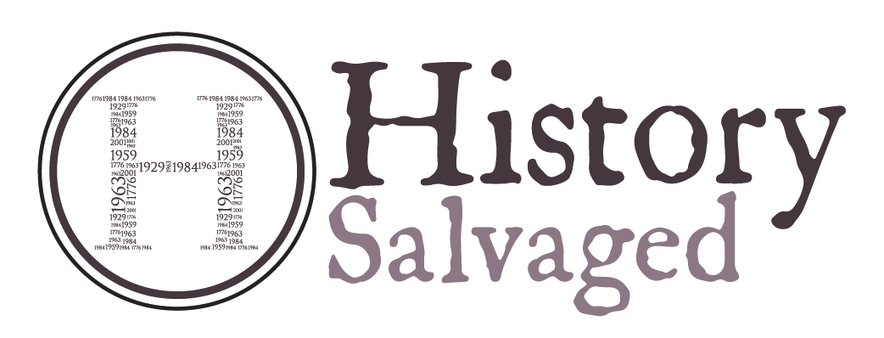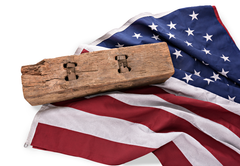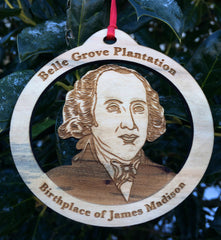Revolutionary war & early america
History Salvaged along with working with historic sites, museums and fraternal organizations continually search for new and exciting Witness Wood® and other materials of historic significance. Hereinbelow is a brief description of some very scarce Witness Wood® acquired by History Salvaged that is related to the Revolutionary War & Early America.
Due to the rarity of many these Witness Woods® and because almost ALL of our Witness Wood® pens are custom made to order, there may NOT be a listing for a specific pen or other items for certain of these woods listed in our store.
PLEASE EMAIL US - if there is a specific Witness Wood® pen or other items you are interested in!
Email Bob@HistorySalvaged.com and we will be happy to work with you to create your perfect custom pen, knife, cufflinks, or other items. Please note: History Salvaged custom handcrafted pens typically are delivered in 2 weeks for placement of your order.
Washington Elm (Boston)
The WASHINGTON ELM Witness Wood® is the Elm tree under which General George Washington assumed command of the American Army during the Revolutionary War, July 3, 1775.
History Salvaged was able to acquire this rare piece of American History from the collection of the now-defunct Frank P. Blair Post No. 1, Department of Missouris, Grand Army of the Republic. This rare piece of "Washington Elm" Witness Wood® that stood until it succumbed to the disease in 1923 was presented to the Frank P. Blair Post No. 1 of the GAR by Thomas H. Lucy of William H. Smart Post No. 30 of Cambridge Mass in 1923.
"In 1923, the tree was very fragile and diseased. Workers from the parks department of Cambridge were cutting two of the remaining limbs. Upon cutting the second limb, the entire tree fell over onto its iron fence and brought the Boston Elevated Railway cable to within 15 feet of the ground. The tree was divided up into approximately 1000 pieces, and these were distributed to all states and their legislatures. The cross-section of the tree was sent to Mount Vernon. About 150 pieces were given over the counter, a few hundred were mailed throughout the country, and some fraternal organizations received pieces as well."
Christ Church (Philadelphia)
Known as "The Nation's Church" because of the famous Revolution-era leaders who worshiped here, Christ Church was founded in 1695. It was the first parish of the Church of England (Anglican) in Pennsylvania. It is also the church where the American Episcopal Church was born.
“No other church has played a more significant role in our nation’s birth”, according to historian David McCullough. Christ Church was founded in 1695 as a condition of William Penn’s Charter. The current building dates to 1744, and has been cited as “our finest Early American church.” Its steeple (1754) is the work of Robert Smith, one of America’s earliest architects; Thomas U. Walter, later architect of the U.S. Capitol, redesigned the interior of the sanctuary (1832-36). At Christ Church, 25% of Philadelphia’s free and enslaved Africans were baptized, a school was created to educate slaves, and the first black priest, Absalom Jones, was ordained. During the Revolutionary Era, Christ Church welcomed the Continental Congresses. Benjamin and Deborah Franklin and Betsy Ross were parishioners. Later, George Washington and John Adams attended services while they were the nation’s Chief Executives.
History Salvaged acquired an assortment of Witness Wood® nails and copper removed during repairs and restoration from the privately managed historic site.
St. Peter’s Church (Philadelphia)
Rising on land donated by William Penn’s sons in Philadelphia, St. Peter’s first service was held on September 4, 1761, and the church has been in continuous use ever since.
Although the church grounds and cemetery boast a large collection of trees, the yard’s most famous trees are seven Osage oranges linked to the Lewis and Clark Expedition of 1804-06 and the Horse Chestnut that predated the original construction.
Unfortunately, after years of nursing the centerpiece and oldest tree in the yard, the large HORSE CHESTNUT that shadowed the church tower from the west, was removed in late 2011 due to continued poor health. St. Peter’s waited until after the church’s 250th anniversary to commission its removal at which time History Salvaged Master Pen Maker was afforded the opportunity to work with arborists removing the tree and to identify and secure Witness Wood® that could be used to create heirloom pens. The 250+-year-old Witness Wood® could attest to much of Philadelphia and US history including America’s Colonial and Revolutionary past when regular services were attended by Martha and George Washington and internment of notables including Commodore Stephan Decatur among others
Old North Church (Boston)
The Old North Church Witness Wood® acquired by History Salvaged was removed during preservation and made available from Old North Church.
The Old North Church was built in 1723 and History Salvaged has been fortunate in acquiring pieces of original construction 1723 beam that needed to be removed during the preservation and restoration process.
The enduring fame of the Old North began on the evening of April 18, 1775, when the church sexton, Robert Newman, and Vestryman Capt. John Pulling, Jr. climbed the steeple and held high two lanterns as a signal from Paul Revere that the British were marching to Lexington and Concord by sea across the Charles River and not by land. This fateful event ignited the American Revolution.
This amazing Witness Wood® dates to the colonial and revolutionary period of American History and will always stir memories of not only Paul Revere, “One if by Land, Two if by Sea” and the famed Midnight Ride when lanterns were hung in the steeple of Old North Church but also, the very cradle and seminal events of the American Revolutionary War and all things Boston - John Adams, the Boston Tea Party, Lexington and Concord.
Independence Hall
Independence Hall is arguably the birthplace of the United States of America, home of the Declaration of Independence, the US Constitution, and the Liberty Bell.
History Salvage acquired the only documented Witness Wood® that was ever removed from Independence Hall.
This Independence Hall Witness Wood® includes pieces of beams that supported the floor when both the Declaration of Independence and the Constitution were debated and signed. These Independence Hall Witness Wood® beams and railings that had once felt the footsteps and touch of George Washington, Benjamin Franklin, Thomas Jefferson, and John Adams, among others, were torn up as part of a renovation in 1898. Fortunate to find and acquire the wood, we are developing a Limited Edition series of heirloom quality, precious and semi-precious metal fine writing instruments and cuff links that will present this historic Witness Wood® with the reverence and respect that it deserves.
Last Battle of the American Revolution – Cedar Bridge Tavern
Cedar Bridge Tavern Witness Wood® is a rare artifact that commemorates the “Affair at Cedar Bridge”. Recognized as the “Last battle of the American Revolution”, the Affair at Cedar Bridge was fought in Barnegat, NJ on December 27, 1782, at the site of a circa 1740 building along the Cedar Creek, the Cedar Bridge Tavern.
The Witness Wood® was given to History Salvaged by the long time owner of the Tavern, Rudy Koenig and was removed from the Tavern during one of Rudy’s routine renovations and restorations.
Trinity Church (NYC)
The Trinity Church Witness Wood® is a piece of Trinity Church Wall Street, a still-active Episcopal Parish that has been an integral part of New York City’s history for more than 300 years and whose history is intertwined with many of the biggest names and events in American history.
Acquired by History Salvaged along with several other pieces of Witness Wood® from the John S. Reigart Collection.
Reigart was born in 1833/34 in New York City where he resided for most of his life. In his occupation as a bank clerk, Reigart took pride in record keeping and precise penmanship as evidenced not only by his record books but also in the way he detailed the identification labels he often affixed to pieces in his collection of American Historical Artifacts.
During the mid and late 19th century Reigart assembled a comprehensive collection of "relics" from every period of America's history. Clearly aware of the importance of provenance, Reigart included detailed documentation for all of the pieces in his extensive collection in the form of period ink script notes, many of which he attached to the actual artifacts.
Reigart's collection was discovered in the estate of a deceased Connecticut book dealer and pieces have been authenticated by some of the largest auction houses in America.
History Salvaged is proud to have been able to acquire several Witness Wood® pieces of the Reigart Collection some of which will be repurposed into one of a kind heirlooms. History Salvaged is committed to preserving the memory, vision, and collection of John S. Reigart and only items that are decaying and in a state where their fragility puts them at risk of being lost forever to history, will be stabilized and repurposed.
John Street Methodist Church (NYC)
History Salvaged Old John Street Methodist Episcopal Church, Witness Wood® are pieces of the original beams of Old John Street Methodist Church of John Street, New York City, erected A. D. 1768. Presented to J. S. Reigart by the colored sexton of the new John Street Church on Thursday, September 13, 1888. The sexton cut it from a portion of one of the original beams kept by the trustees of the church (in the cellar) for presentation to their friends.
The John Street United Methodist Church located at 44 John Street between Nassau and William Streets in the Financial District of Manhattan, New York City was built in 1841 in the Georgian style, with the design attributed to William Hurry and/or Philip Embury. The congregation is the oldest Methodist congregation in North America, founded on October 12, 1766, as the Wesleyan Society in America. The Society built its first church, the Wesley Chapel, a blue stucco barn, on this site in 1768.
In the second half of the 19th Century John S. Reigart, a bank clerk in New York City assembled a large collection of relics related to American history. Most of the relics are of wood recovered from historic buildings and ships and neatly shaped on a lathe. Each object in his collection was described on a paper label attached directly to the relic. This item is from Reigart's collection and is described in his hand. It is unconditionally guaranteed to be authentic.
Fort Erie
Old South Church (Boston)








